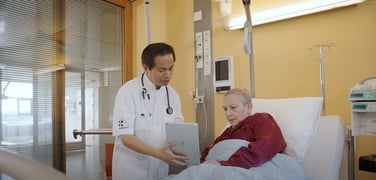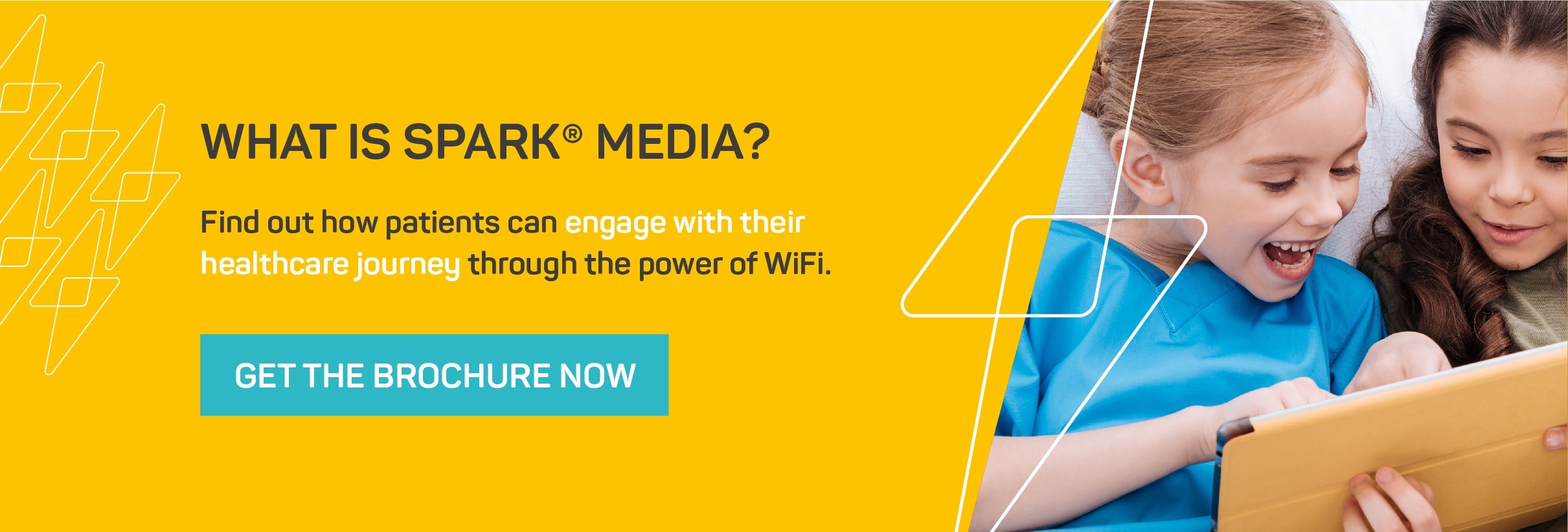Digital Transformation in the NHS - Are We Moving Fast Enough?
6 minute read | 02/07/2018

In 2013, then Health Secretary, Jeremy Hunt announced his plans to migrate the NHS from paper to tablet. A decision that will cost over £4 billion, this digitalisation offers the NHS the chance to meet the demands set out in the Five Year Forward View and provide patients with higher quality care and services that are easier to access. But are we moving fast enough? We’ll analyse what’s being done and what still needs to be done.
What’s the Current State of the Digital Transformation?
In January 2017, free WiFi was rolled out in approximately 1,000 GP surgeries across the country and by February 2018, 11.3 million patients had been registered for online health services and 1.9 million repeat prescriptions had been ordered online. It seemed that the NHS was making good progress.
The UK Government plans to provide free WiFi in every NHS building by 2020. Encouraging the use of such technology will help cut paperwork and errors, alert health staff to medical issues and improve overall patient experience in the process.
But, a recent survey involving 102 NHS IT leaders found that 17 percent of NHS Trusts haven’t got a digital transformation strategy in place and a further 24 percent have only just started one.
While this might not be the majority, it still suggests that preparing and implementing digital transformation strategies isn’t a priority for some Trusts. It may even suggest some Trusts don’t see digitalisation as important at all.
Why did the NHS Need to be Digitalised?
Recording and storing information in physical format has been replaced by digital storage systems which are not only more streamlined, but they’re also more convenient and easier to access.
The NHS has arguably been one of the slowest bodies to adapt to the change. In fact, according to the British Medical Journal (BMJ), it’s reported to be 20 years behind the private sector with its use of technology. But it’s time to change because the lack of digitalisation is majorly slowing down the NHS staff.
For instance, a BMJ article discussing the NHS’ digital move stated that administration had roughly been taking up 70 percent of a junior doctor’s time. This meant less time was spent with patients. Digitalisation will not only free up this time, it’ll also make it easier to track down medical records and deliver quality healthcare.
This is why reports that some NHS Trusts aren’t prioritising digitalisation are significant. These Trusts are likely to be missing out on the many benefits that the digital era can bring to healthcare.
For example, WiFi can:
- Help provide a better patient experience and reduce complaints
- Help boost working efficiency among NHS staff
- Help with resource allocation and provide a better organised Trust
Help Provide a Better Patient Experience and Reduce Complaints
WiFi can boost a patient’s experience in a hospital or other NHS building in a variety of ways. For starters, it can help provide instant access to any health-related information a patient might want to know.
Trusts can offer a digital patient infotainment solution which contains features that, for example, allow patients to check into appointments online and wayfinding applications so they can easily navigate their way to the consultation room.
There are some infotainment solutions that offer additional capabilities - for example, live TV, radio, films on demand, meal ordering and information about their health, all to the patient’s own device. Features like these prevent patients from feeling as though they are “hostages” to their health condition by keeping them entertained and “in the loop” about their care. This helps to significantly boost their patient experience and reduce complaints.
In addition, a modern infotainment solution can include feedback tools, such as the Friends and Family Test, integrated into their system. There may also be advertising banners reminding patients to give feedback.
This is important because feedback is essential if a Trust is going to keep improving its healthcare service. But it’s too easy for patients to not fill in surveys, whether it’s because they’ve forgotten, they’re too busy or they simply don’t want to. Because a good patient infotainment solution can help improve a patient’s mood, this can leave them more likely to be cooperative and want to provide helpful feedback.
This then has a knock-on effect on patient complaints as feedback helps a Trust improve its service which further reduces complaints. And the cycle goes on.
Help Boost Working Efficiency Among NHS Staff
When people arrive in hospitals, they often need help in finding their way around from the staff. This can distract NHS staff from carrying out their other vital duties because they’re dealing with non-medical queries.
A digital patient infotainment solution can give patients and visitors the power of information, telling them anything they might want to know about the hospital, such as wayfinding, reading the food menu, or checking into appointments. This relieves some of the burden from NHS staff, allowing them to focus on their other more vital, medical-related tasks which helps to boost productivity.
Help with Resource Allocation and Provide a Better Organised Trust
It may seem that WiFi is only there to help patients and visitors stay connected but it actually offers so much more. For example, WiFi data can provide smart analytics that help with resource allocation so a Trust can run more efficiently.
With WiFi data, NHS Trusts can collect valuable analytics which give insight into anonymous patient trends such as the busiest times, how long people stay and how they tend to move across the site (in the form of heat maps). This can give Trusts an idea of how to allocate their resources and promote smart spending.
For instance, knowing when the busiest times in the hospital are means management can arrange work rotas more effectively. Knowing how long people stay and how they move across the site can allow Trusts to place particular services, such as a gift shop or other concession, to help keep visitors entertained. This means Trusts can create an environment which is more seamless and pleasant.
In addition, feedback gathered via the digital patient infotainment solution can help Trusts improve on their services even more.
Going Digital Isn’t Just About Being Up to Date - it Helps the NHS Stay Patient-Centric
The NHS’ transformation isn’t just because every other organisation, agency and government body is adapting to the digital era. It helps the NHS keep the patient at its very centre in many ways - from boosting their healthcare experience to improving a Trust’s efficiency. These benefits can’t be ignored.
If you’d like to find out more about the innovative digital features that the NHS can make best use of, download our brochure for SPARK® Media. SPARK® Media is a suite of solutions designed to empower both patients and healthcare professionals by providing features like entertainment services, engagement and clinical access. Take a look at what it can do for your Trust below.
About the author
Rebecca O'Donovan
Becky is the Marketing Director at SPARK TSL, of whom she has worked for since 2012. She is responsible for high-level marketing strategy focusing on lead generation and aiding the vision of the business to ensure business growth.
More articles by the author
Related articles
 Healthcare Industry
Healthcare Industry
Using Patient Feedback to Improve Service Levels | SPARK TSL
When thinking logically about improving a service, it makes sense to survey the people receiving it, figure ...
 Charity
Charity
Our Team Increases Charity Exposure at The Royal Free Hospital
The Royal Free London NHS Foundation Trust is one of the UK's biggest Trusts, caring for more than 1.6 ...
 Company News
Company News
Introducing SPARK Fusion®, the Hospedia Upgrade
Understanding Hospedia, the current bedside entertainment solution If you’ve been to hospital, then you’ve ...


